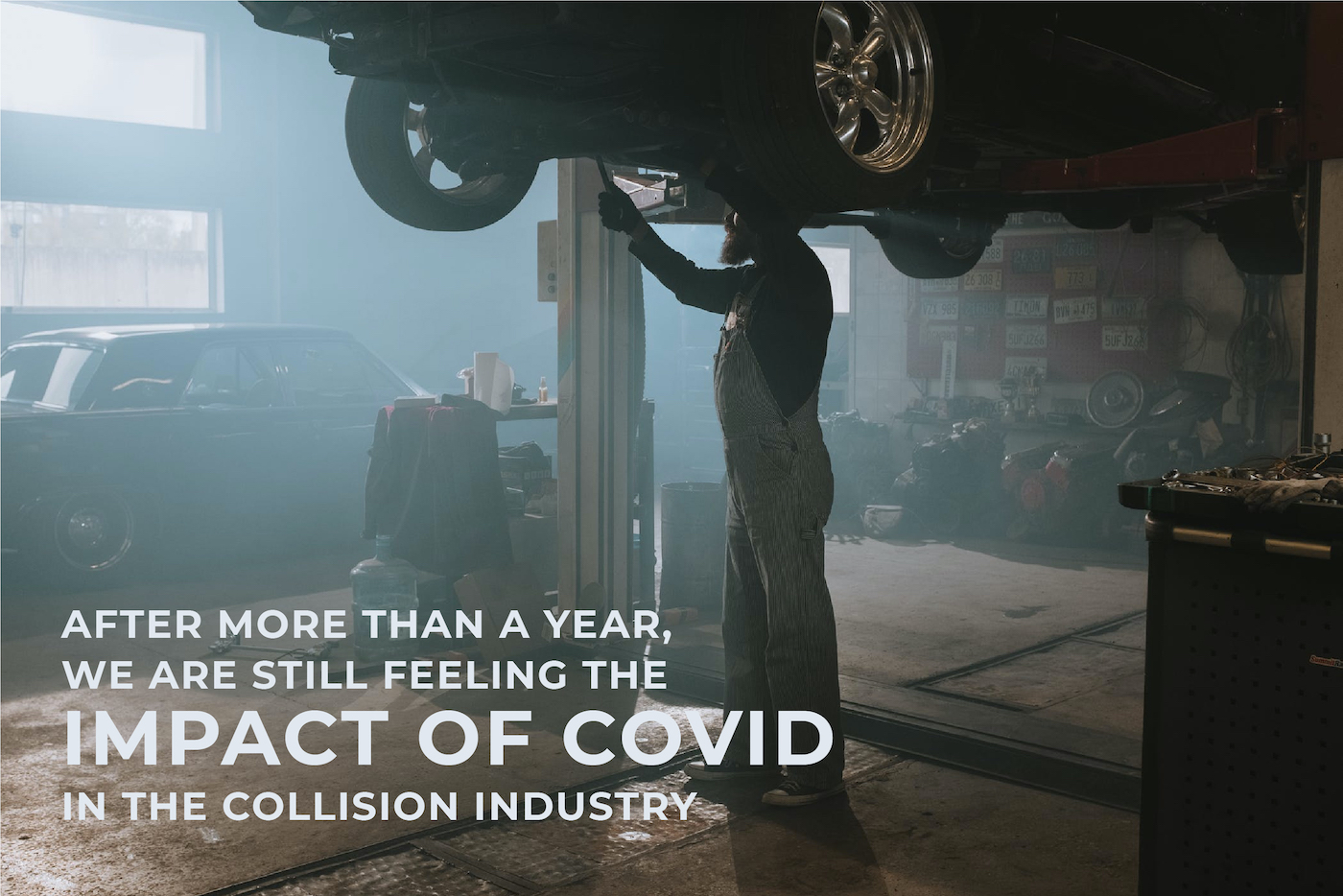After More Than a Year, We Are Still Feeling the Impact of COVID in the Collision Industry

The COVID-19 global pandemic has cost millions of lives around the world and more than 600,000 in the U.S. alone. The economic impact has been devastating, and the collision industry is no exception. As we start to return to pre-COVID claims levels, what are the lingering effects of the pandemic for our industry?
The Transition to Virtual Claims Handling Was Accelerated
Prior to the lockdown in April 2020, some carriers had begun experimenting with work-from-home and were beginning a virtual claims-handling model aimed at improving efficiencies. The carriers that had built out this workflow were able to pivot rapidly and ramp up virtual claims processing. Customers accepted a virtual claims workflow and photo-based estimating process, and carriers found efficiency gains. As in-person field appraisals were suspended, Direct Repair Program volume increased as well. Carriers realized that these two inspection models were both cost-effective and had high customer satisfaction, meaning the volume gains that each of these channels achieved during lockdown will continue.
Parts Supply Shortages
Parts shortages have hit automakers relentlessly since they restarted production last year. Microchip manufacturing capacity, which would normally have been allocated to vehicle components, was shifted to phone, computer and gaming system manufacturing as the demand skyrocketed during lockdown and the transition to work-from-home. More than a year later, we have heard of collision parts shortages, which appear to be minor disruptions in packaging and shipping rather than components not being produced. Now comes news about potential curtailed production of rubber, this time not related to COVID, but rather to a disease affecting rubber plants. This reduction in rubber material supply could result in higher prices for tires, hoses and belts, and in a worst-case scenario, could cause vehicle manufacturers yet another disruption in production just as the microchip shortage is resolved.
Vehicle Values
As new vehicle sales hit a record seasonally adjusted annual rate (SAAR) of 18 million vehicles despite incredibly tight inventory, we see used vehicle values jump dramatically. A sharp increase in used vehicle values is a double-edged sword for insurers and collision repairers. It raises the total loss threshold for vehicle repair, but also increases the price of total loss vehicle values and therefore the cost of recycled parts and assemblies used in collision repair.
Going Forward
Our industry will feel the impacts of COVID for the remainder of the year. While much of this is out of our control, we can focus on what we can control. A large part of what we can control is how we find and procure parts. Because replacement parts make up more than 45% of the cost of a collision repair, obtaining the most cost-effective, highest quality available parts has become more important than ever. The parts have to be the right quality, the best price and delivered at the right time.

Greg Horn
Greg Horn is PartsTrader’s
Chief Innovation Officer.
